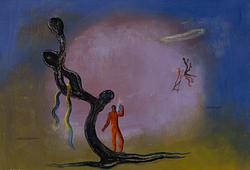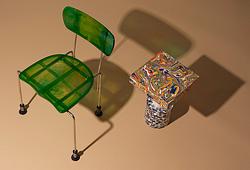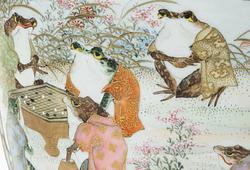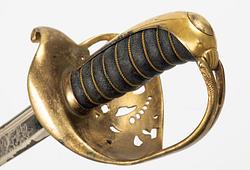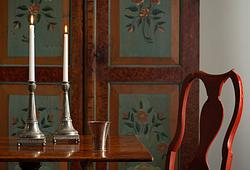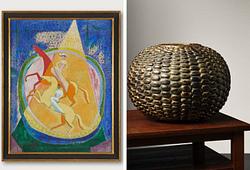Important Spring Sale presents Anders Zorn
Bukowskis presents "I Hamburgs hamn" by Anders Zorn at the seasons largest live auction – Important Spring Sale.
Anders and Emma Zorn concluded the year 1890 with a trip to Hamburg, where they were guests of Simon Henriques, who was married to Emma's aunt. Zorn later wrote about their stay in the German city: "It was frightfully and icy cold out on Kaiserhöft, but interesting to paint this muddy water with large and small steamers, steam, sun, and mist." In connection with this trip, Zorn executed the auction's current watercolour "I Hamburgs hamn" (In the Hamburg Harbour) a work that both the Hamburger Kunsthalle in Hamburg and the Fundación MAPFRE in Madrid are interested in borrowing for their upcoming exhibitions on Anders Zorn later this year and in 2026.
He writes: "In the loosely composed sketches, his visual impressions of the harbour are reduced to summary suggestions of dark hulls reflected in the water or of a quay that, in an effective diagonal, runs into the picture. [...] But the impressionist Zorn has primarily concentrated his attention on momentary experiences of natural phenomena, the shifts of light, the swirling movements of water, the steam, and the air in Hamburg's murky harbour basin with its caissons and distant-going vessels."

Five years earlier, Anders Zorn had begun to work intensively on depicting water and its reflections. He writes in his autobiographical notes:
"Having returned to Sweden, we stayed with my mother-in-law in Dalarö, and I immediately began to tackle nature, solving new problems. What seems to have particularly attracted me was the play of water and reflections, to really get it to move, to set the waves and everything in perspective and scientifically explain everything with meticulous precision. Also, intricate thickets in spruce forests and thorn bushes, always with a few figures that interrupted the monotony of the painting with their colour."
During this summer stay in 1886, he painted, among other masterpieces, "Sommarnöje" and "Kapprodd". Zorn himself claimed that he worked "scientifically" when it came to depicting water. Hans Henrik Brummer writes: "The artistic representation of geological and meteorological conditions in the landscape revealed a truth of nature. And representation meant for Zorn almost an inventory and accounting of an endless number of optical observations of conditions in nature."
All works by Anders Zorn at Important Spring Sale

Hammer price
Unsold
Estimate
100 000 - 125 000 SEK
Requests & condition reports

Stockholm
Andreas Rydén
Head Specialist, Art, Deputy Managing Director
+46 (0)728 58 71 39

Stockholm
Rasmus Sjöbeck
Assistant Specialist Classic Art, Old Masters
+46 (0)727 33 24 02




